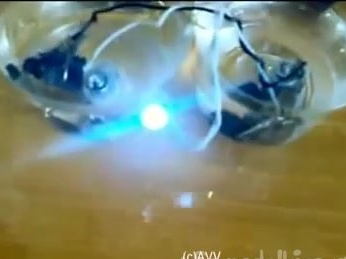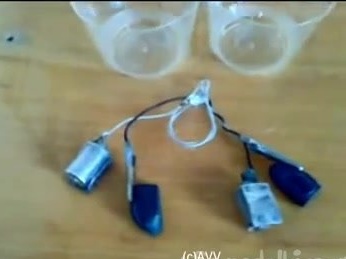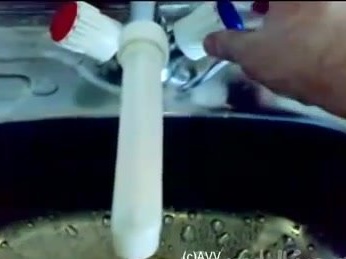
Sometimes it happens that a battery is urgently needed at home so that some low-powered equipment or a children's toy starts working. And there is no opportunity to go directly to the store and buy it. In this case, you need to try to collect the battery in home conditions, but the question is what and how?
There are many types of batteries: saline, alkaline, molding ... Have you heard about water? This is a very unusual battery that can be made do it yourself even at home. In this battery, ordinary tap water from your faucet will be used as electrolytes.
Let's watch a video of the manufacturing process homemade:
[media = http: //www.youtube.com/watch? v = KVzAO-mzJ8o]
In order to collect the water battery you will need:
- 2 plastic glasses of 500 ml;
- 500 ml of tap water;
- Light-emitting diode;
- several wires;
- 2 bars of magnesium alloy;
- 2 bars of coal;
- a soldering iron and everything necessary for soldering.
The electrode system consists of two parts interconnected in series and an LED that can tell about the result of the work done. Each part consists of two elements: a magnesium alloy bar and a coal bar. This is necessary in order to provide the necessary voltage in such an unusual battery, since one cell produces only 1.5V. And in order for our LED to light up, a voltage of no less than 2.5V is required.

So, the bars are interconnected by wires, as mentioned above, in series. An LED is attached to them. The wires are attached to the bars and LED by soldering. At the same time, do not forget about safety.

After the design is assembled, the electrodes are lowered into plastic glasses in a strictly defined sequence: a bar of magnesium alloy, then a bar of coal in one glass, the same in another. The LED should stay on top of the outside of the tanks.

The battery is ready for use. It remains only to fill it with cold water. The glasses are filled directly from the water tap alternately, to the level until the elements of the electrodes are completely closed.

As the second glass is filled, the LED gradually starts to light up and, in the end, will light up brightly and continuously.If you pay attention to the electrodes, you can see that the cathodes, made of magnesium alloy, began to emit hydrogen bubbles.
This water battery turned out using ordinary tap water, without the special addition of any salts or alkalis.
